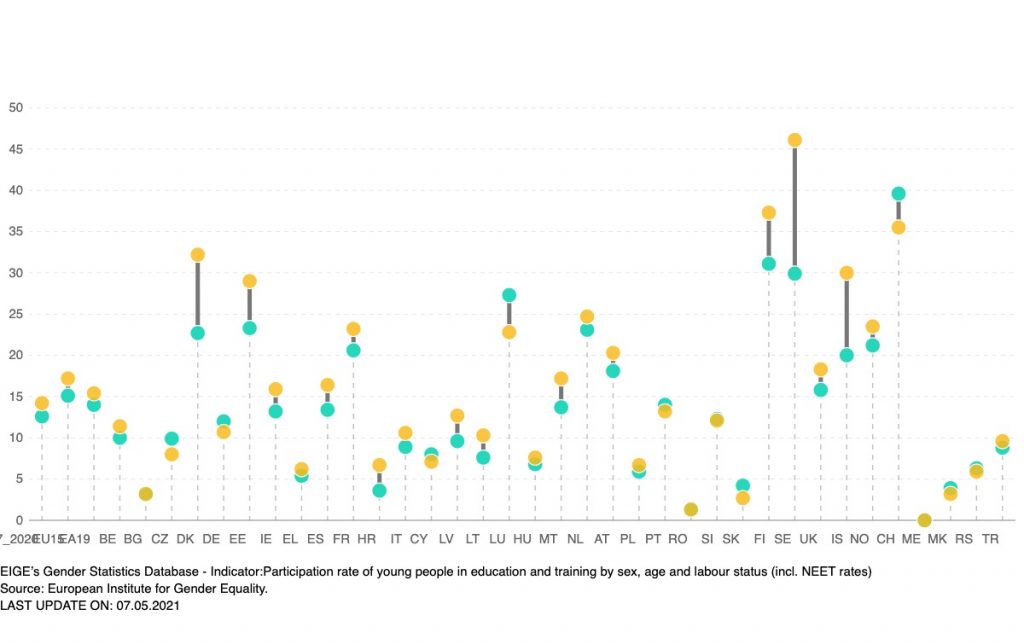Who participates in E&T: the F/M gap…
A recent piece by Petra Ahrens and Lise Rolandsen Agustin in Social Europe addressed gender equality in European institutions. They showed that there has quite strong progress towards numerical equality in the European Parliament; but this simple top-level statistic disguises how institutional mechanisms operate to sideline the issue. In particular:
Gender equality is still habitually misunderstood as a ‘women’s issue’—often in a way which essentialises identity—or defensively restricted to its ‘business case’. Many MEPs continue to see gender equality as a niche with little to do with other policy domains and thus commitment to gender equality remains limited in a lot of committees and political groups. In addition, the growing number of oppositional forces which hold essentialist views of women, and men, threaten the position of the EP as a strong gender-equality advocate.
Point taken. Anyway, reading this prompted me to get in touch with the authors, and Petra helpfully pointed me towards some recent EU data on education and training. The two charts below show participation rates for two different age groups: first for 20-24 year-olds, and then for those 10 years older, 30-34. (Apologies for the lack of labels on the actual charts.)
What conclusions can we draw? First, that for both age groups, in the great majority of countries women participate more in education and training. A simple confirmation of what we’ve known for a while, and which formed the starting point of the Paula Principle. I’d still say that not enough attention is paid to this continuing trend in the general debate on gender equality. It really shapes the overall dynamic.
Secondly, the gap between women and men is greater for the younger age group. This has two explanations, which point in rather different directions. One is the continued widening, year on year, of the gap between the genders in respect of educational achievement – a gap which is widening faster than the gender pay gap is closing. It’s a natural consequence of the generation effect that younger women will have an even greater lead over their male contemporaries than did their predecessors.
The other explanation has a very different resonance. It is that a good number of 30-34 year old women will have young children and be facing a huge time squeeze, so that for them the idea of taking part in education and training has slipped down the agenda – so much so that they only just maintain their lead. (I should stress that I don’t want to frame it as a competition between women and men; both need access to the widest range of learning opportunities.)
For a country such as Turkey the former factor looks the stronger, ie it makes a generation shift rather than a life cycle one. For others, such as Germany, the rate for women in the older group actually dips behind that for men.


The EU database for this has a whizzy little device which enables you to track the trajectories of the gender E&T gap over time, from the beginning of the century. You can see, for example, how in some countries women have overtaken men in the past few years in their participation rates – what I call the crossover point. The Netherlands is a particular case in point, where the yellow dot surges up past the green one round about 2007.
This is of course very simple data: we need to know more about the length of the learning, its level and so on. Somewhat disappointingly, the age groups only go up to 34 – surely we need to know what the rates are for adults older than this, at a time when workers in the upper age ranges are being encouraged to stay on in the labour force.
And of course, from the PP viewpoint, we need to match up these figures, and the trajectories they show, to equivalent data on pay and careers. The EIGE source has quite a lot of data on work, including on issues such as work/life balance. But I couldn’t see anything on gender pay gaps, or on career trajectories.
